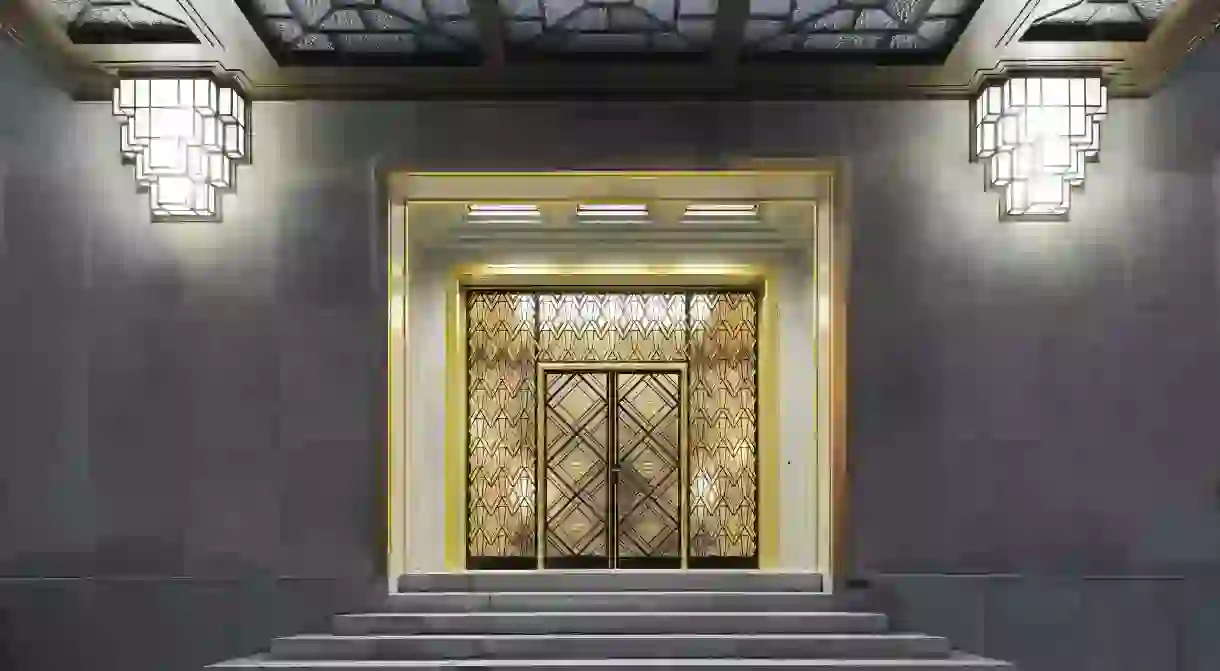A Brief History of Art Deco in Belgium

Thanks to Victor Horta’s exuberant townhouses, Brussels is known as the Art Nouveau capital par excellence, but there’s no ignoring the Koekelberg Basilica, cultural temples Bozar and Flagey, and the solid Villa Empain – all Art Deco masterpieces reigning over the urban landscape. After the end of the First World War, it was out with the frills and in with functionality and expensive materials. Symmetry became beauty, and Brussels still has lots of it.
Unlike Art Nouveau, a movement synonymous with pioneering architect Victor Horta and the innovative changes he made to elite living spaces, Belgian Art Deco doesn’t have just one discernible standard-bearer. After the Great War, the decadent flourishes and innate opulence of Art Nouveau seemed misplaced, and most Belgian architects set their sights on a modern look more suitable to the times.

Taking its name from the 1925 Exposition Internationale des Arts Décoratifs et Industriels Modernes in Paris, Art Deco preferred simple shapes to the floral patterning and stained-glass windows of its predecessor. Held in the highest regard was symmetry, and reeling in the first prize at the exhibit for his attention to it was the Belgian Albert Van Huffel. His final design for the Basilica of the Sacred Heart, more commonly known as the Koekelberg Basilica (it sits on Koekelberg hill), laid out a symmetrical giant that today ranks amongst the top 10 of the largest churches in the world. The lookout post atop its cupola, measuring 53 meters (174 feet) high, provides an exquisite view of Brussels below.
That Art Nouveau’s former champion also gave himself over to the dominant post-war sensibilities is imminently clear when looking at the geometrical façade of Bozar, Brussels’ Center of Fine Arts. For this cultural palace on the Mont des Arts, Horta bid goodbye to his former exuberance for a more streamlined whole. Taking into account Joseph Diongre’s Flagey in the sleek shape of an ocean liner, this means that both of Brussels’ biggest cultural temples are faithful to the Art Deco aesthetic.

And then there are the capital’s ambitious Art Deco mansions and residences. Among the most sumptuous is Villa Empain, a magnificent example of not only symmetry but also the luxe materials with which the “Roaring Twenties” were obsessed. The interior of the Van Buuren Museum, former home of patron couple Alice and David, is the epitome of the Art Deco living space, and the former luxury apartment complex Résidence Palace boasts a pool and theater that are considered jewels of the period. Sadly, the renovation and re-opening of the latter have taken a backseat to other works going on in the immediate neighborhood for now. Of all the Art Deco treasures in Brussels that are open to the public, many of them are private apartments or houses. Luckily, there’s the capital’s Art Nouveau and Art Deco festival (coming up in March 2017), which allows architecture fans a peek in those usually off-limits, Gatsby-like dwellings.













